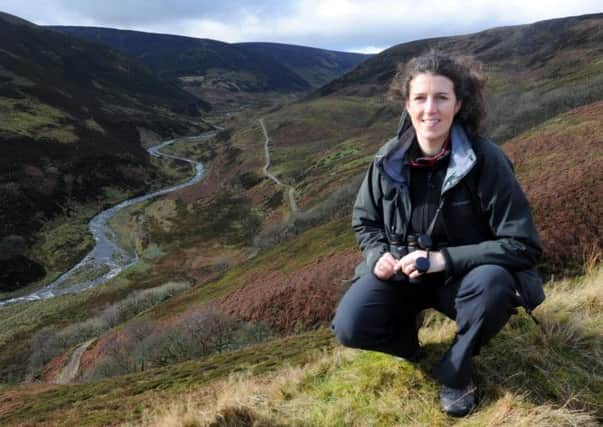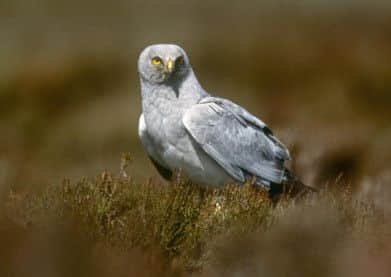Watcher of the skies


But the many hours she spends, in all weathers, in close contact with moorland heather, have one aim; to monitor one of our most threatened birds … the hen harrier.
“Yes, it’s true that I lie down in the heather,” she says with a smile. “I can be there for four or five hours at a time and if the weather is good, it’s cool. “
Advertisement
Hide AdAdvertisement
Hide AdIf it isn’t … well, that is the down side of working in the outdoors for part of the year, especially in England.


Sadly, there has been another down side to Jude’s work in the past two years; no hen harriers, or, at least, none that have chosen to breed in the area of Bowland where she works, the 26,000-acre United Utilities site near Slaidburn. For Bowland, which has hosted between 50% and 100% of all hen harrier nesting attempts in England since 1991, that is bad news.
“The first year we didn’t have any breeding birds was 2012,” says Jude. “This compares to 2011 when there were four successful nests on the UU site – the only ones in England.”
Last year was the first since the 1960s that the hen harrier had failed to nest successfully in England. For Jude, that meant a lot of waiting and watching, but with few rewards. “We only had sightings for a day or two last year. Just one pair.” she says. “We’re hoping for them to return this year.” In contrast, in 2011, there were six pairs in Bowland and four of them bred successfully, with 12 young fledged that season.
Advertisement
Hide AdAdvertisement
Hide AdIn addition to her field work, Jude is part of a team that rolls out a programme aimed at raising awareness and educating the public about the hen harrier.
“This isn’t a kestrel or a bird that people might instantly recognise,” she says. “Awareness is very low. By educating them they are more likely to call in with a sighting, and if it turns out to be a hen harrier it can lead us to find a potential breeding site or roost.
“The other reason to educate people is to get the laws changed. The government needs to be doing more for this bird.”
One significant development in this direction was the publication in October of the Law Commission’s recommendations following a consultation on potential changes to wildlife law in England and Wales.
Advertisement
Hide AdAdvertisement
Hide AdThese include the recognition of the seriousness of some wildlife crimes and the recommendation for an option for these cases to be tried at the Crown Court, where higher penalties are available. Jude believes that if more people were aware of hen harriers, and of why there are so few in England, they would be more likely to lend their weight to demands for better protection.
“Mainland England – Bowland – has always been a stronghold for hen harriers and that is down to strong partnerships between landowners, United Utilities, tenants, the AONB and RSPB,” says Jude.
“United Utilities approached the RSPB in 1981 because they were keen to have help in monitoring the birds, and we’ve had a presence here ever since.
“For us it’s a key case study because, as well as farming tenants, we have shooting tenants. And, of course, the land is being managed by UU to provide sustainable, clean drinking water.”
Advertisement
Hide AdAdvertisement
Hide AdThe reality for hen harriers, however, is that despite everyone’s efforts very few of these beautiful raptors choose to call England their home, despite there being suitable habitat for up to 320 pairs.
The RSPB says the dearth of the birds in this country is down to illegal persecution; hen harriers will take grouse, which makes them unpopular with gamekeepers. In 2012, the female known as Bowland Betty, which was satellite tagged as a young bird, was found dead in the Yorkshire Dales National Park. The post mortem showed she had been shot.
Campaigners hope that, among other reforms to help raptors, will be one on vicarious liability, which will mean landowners taking responsibility for birds shot on their estates.
According to the JNCC Conservation Framework for Hen harriers in the UK (2011) productivity needs to be 1.2 per breeding attempt to achieve favourable conservation status. The UU estate average between 1991 and 2011 was 1.7.
Advertisement
Hide AdAdvertisement
Hide Adl If you do spot one you can call the Harrier Hotline on 0845 4600121 (calls charged at local rate) or e-mail [email protected]. Reports of sightings should include the date and location of sighting, with a six-figure grid reference where possible.